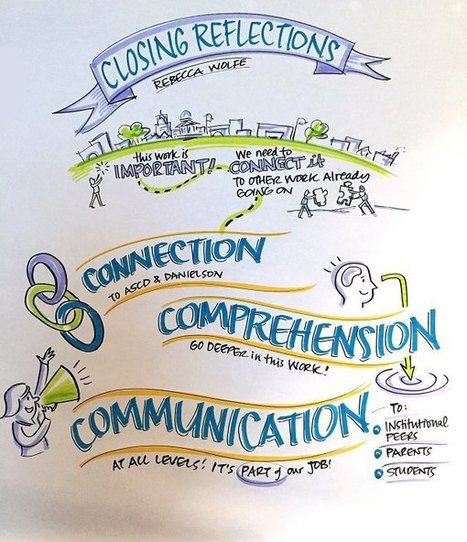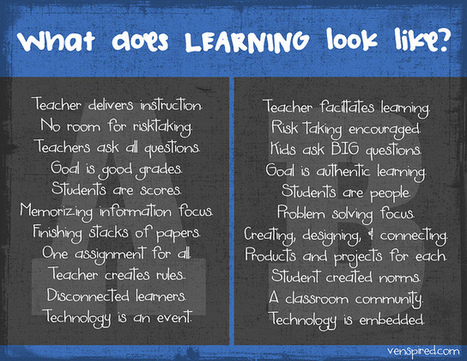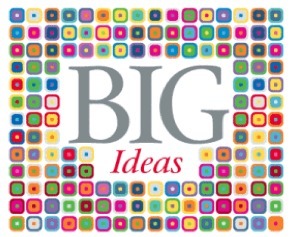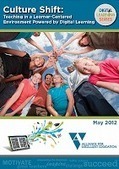Get Started for FREE
Sign up with Facebook Sign up with X
I don't have a Facebook or a X account
 Your new post is loading... Your new post is loading...
 Your new post is loading... Your new post is loading...

Stephen Gwilliam's curator insight,
January 8, 2013 4:15 PM
Krissy Venosdale revised her Classroom A and Classroom B poster recently to represent "What does Learning Look Like". Some of these Classroom B descriptors indicate a learner-centered environment. What are some other descriptions that you would include?
Here are some of Krissy's thoughts behind Learning:
"Learning is a journey. Our kids change. The world changes. We change as teachers. This morning, I made a revised version of Classroom A versus Classroom B. As someone pointed out, it’s not a black and white issue. There is so much grey and so much individual choice. I’m not saying A or B is better for everyone. I’m saying you’ve gotta think and really understand what you want learning to look like in your classroom." 
Pilar Castro's curator insight,
May 21, 2013 11:48 AM
Es fundamental movernos de un enfoque centrado en la enseñanaza a un enfoque centrado en el aprendizaje. |

Phillip Heath's curator insight,
January 19, 2014 4:08 PM
Relationships will always be the heart of education

Vicki Butler's comment,
May 1, 2013 12:03 PM
These competencies remind me of Gardner's 5 Minds for the Future.

Vicki Butler's curator insight,
May 1, 2013 12:04 PM
These competencies are reflective of Gardner's 5 Minds for the Future and borrowing from Kathleen McClaskey's insights: Kathleen McClaskey's insight:Ben shared the curriculum that is experiential, learner-focused and based on these 7 MS competencies:
>> Self-Assessor: in health, mind, spirituality and organization >> Contributor: through empathy and understanding; making a difference to the surrounding world >> Creator: being an innovator, designer and maker of new things >> Communicator: with compassion through oral, written, visual, musical, non-verbal and dance. >> Collaborator: team member, leading and negotiating, sharing >> Explorer: showing curiosity, taking risks and experimenting >> Thinker: creative, critical, analytical, broad minded
They came up with the 3 Big Ideas last year. For one week three times during the year, there are themes where learners self-direct their learning.

Audrey's comment,
January 23, 2013 4:52 PM
To own your learning you must have an internal locus of control. This means that you understand how you learn and why you want to learn a topic. You actively seek to master ways to expand your learning.and do not depend on anyone. You have faith in your abilities; you are committed, confident with no belief in fate or luck.

Marcello Stoll's curator insight,
January 28, 2013 5:24 AM
"When the learning starts with the learner, the learner takes responsibility for their learning. The report states that the learner owns their learning, but does not provide evidence how this happens. The teacher, data, and technology guides the learning in the model provided in the report -- not the learner."

Aysin Alp's curator insight,
January 11, 2014 3:27 AM
The Learner Moving to a learner-centered environment |



























adicionar sua visão ...